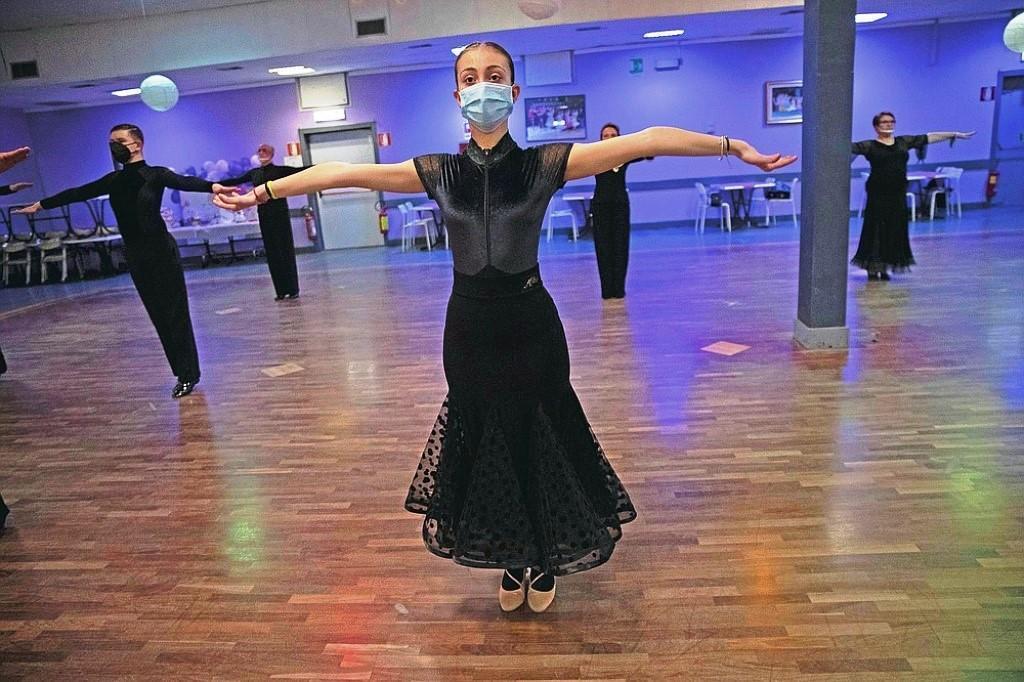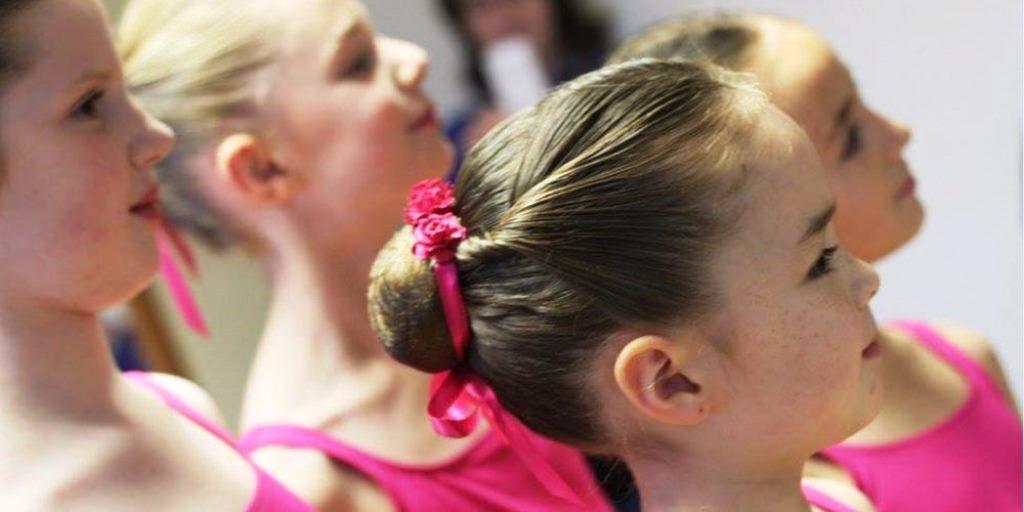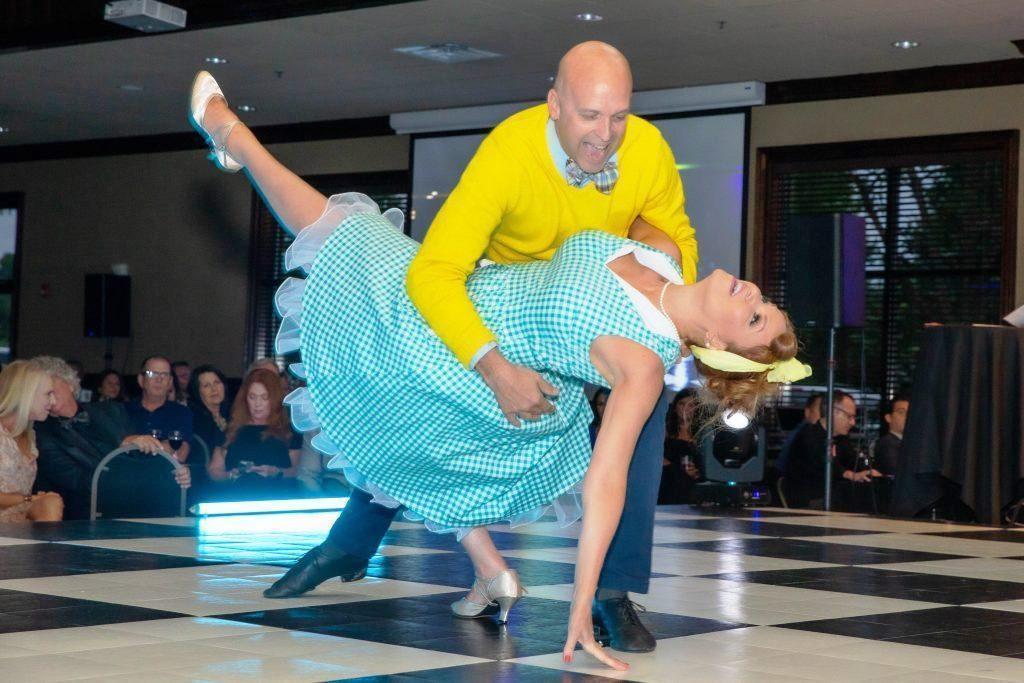
1. Introduction: Exploring the Impact of COVID-19 on Ballroom Dancing
Introduction: Exploring the Impact of COVID-19 on Ballroom Dancing
The coronavirus (COVID-19) pandemic has had a profound impact on the world of ballroom dancing in Britain. As lockdown restrictions have been imposed, ballroom dancing events have been cancelled, classes have been moved online, and social distancing has been enforced. This has left many people in the ballroom dance community feeling isolated and uncertain about the future of the sport.
In this article, we will explore the impact of COVID-19 on ballroom dancing in Britain and how dancers and clubs are navigating this challenging time. We’ll look at the different ways that ballroom dancers are adapting to the new restrictions, and how the ballroom dance community is coming together to support each other through this difficult time.
The Impact of COVID-19 on Ballroom Dancing Events
Since the start of the pandemic, the majority of ballroom dancing events in Britain have been cancelled or postponed. This includes competitions, exhibitions, and social dances. This has had a significant impact on the ballroom dance community, as it has denied dancers the opportunity to show off their skills, meet new people, and take part in the social aspect of the sport.
Moving Ballroom Dancing Classes Online
In response to the pandemic, many ballroom dancing classes have been moved online. This has allowed dancers to continue to practice and hone their skills without having to risk their health by attending in-person classes. While online classes are not the same as in-person classes, they have provided a way for dancers to stay connected and continue to progress in their dance skills.
Social Distancing and Safety Measures
In order to keep dancers safe, social distancing and other safety measures have been put in place at ballroom dancing events. This includes limiting the number of people who can attend, ensuring physical distancing between dancers, and providing hand sanitiser and other hygiene products. These measures have been put in place to ensure that ballroom dancers can continue to enjoy the sport in a safe and responsible manner.
The Ballroom Dance Community Coming Together
Despite the challenges posed by the pandemic, the ballroom dance community in Britain has come together to support each other. Many dancers have been sharing their experiences online, offering advice and support to those who are struggling. Clubs have been organising virtual events and activities to keep the community connected. This has been a great example of how the ballroom dance community can come together in difficult times.
Conclusion
The coronavirus pandemic has had a significant impact on the world of ballroom dancing in Britain. However, the ballroom dance community has shown resilience and solidarity in the face of this challenging time. Through adapting to the new restrictions, moving classes online, and coming together to support each other, dancers and clubs are navigating this difficult period and looking forward to a brighter future.
2. Overview of Ballroom Dance and its Popularity in the UK
Overview of Ballroom Dance and its Popularity in the UK
Ballroom dancing is a popular social activity in the UK, with a long and rich history. It is a form of partner dancing that is often seen in films, on television, and in the media. Ballroom dancing is a style of dance that is performed by couples in a variety of steps and figures. It is a highly structured form of dancing that is widely performed in the UK and around the world.
History of Ballroom Dance in the UK
Ballroom dancing has been popular in the UK since the early 19th century. The first ballroom dance clubs were established in London in the early 1800s, and it quickly became a popular pastime for the upper classes. In the late 19th century, ballroom dancing was popularised by the English aristocracy, who were avid fans of the activity.
By the early 20th century, ballroom dancing had become a mainstream activity, and it was taught in schools and dance academies. The popularity of ballroom dancing continued to grow throughout the 20th century, and it is now a popular activity among all classes and ages in the UK.
Types of Ballroom Dance
There are many different types of ballroom dance, including the Waltz, Foxtrot, Tango, Quickstep, and Viennese Waltz. Each of these dances has its own unique style and is performed to different types of music. Ballroom dancing is a great way to get people of all ages and abilities moving and having fun.
Popularity of Ballroom Dance in the UK
Ballroom dancing is a popular activity in the UK, and it is estimated that over 10 million people in the UK take part in some form of ballroom dancing. There are numerous ballroom dancing clubs and classes in the UK, and the activity is popular among both adults and children.
Ballroom dancing is also popular in the media, with numerous television shows, films, and books dedicated to the activity. It is a great way to stay active, and the social aspect of ballroom dancing makes it an enjoyable activity for all.
3. How to Adapt to Social Distancing Regulations for Ballroom Dance
How to Adapt to Social Distancing Regulations for Ballroom Dance
Understand the Regulations
The first step when adapting to social distancing regulations for ballroom dance is to understand the regulations. In the UK, the government has issued specific guidance on how to dance safely during the COVID-19 pandemic. This includes keeping a distance of 2 metres between people, limiting the number of people in a group, and avoiding physical contact with other dancers.
Choose a Suitable Venue
When considering where to dance, it is important to choose a venue that is large enough to accommodate social distancing requirements. This means that the venue should be able to provide adequate space for all participants to keep a distance of 2 metres from each other.
Adapt Your Dance Style
In order to keep everyone safe, it is important to adapt your dance style to accommodate social distancing regulations. This may mean reducing the number of spins, avoiding lifts, and avoiding close contact with other dancers. It is also important to ensure that you and your partner are not breathing on each other, and to avoid contact with other dancers’ hands and feet.
Be Mindful of Others
Finally, it is important to be mindful of other dancers when adapting to social distancing regulations for ballroom dance. This includes respecting other dancers’ personal space, and being aware of the restrictions and regulations in place. It is also important to be mindful of other dancers’ health and safety, and to follow the guidance of the venue and any other relevant authorities.
4. Exploring the Benefits of Remote Learning for Ballroom Dance
Exploring the Benefits of Remote Learning for Ballroom Dance
The COVID-19 pandemic has presented many challenges to the ballroom dance community in the UK. Social distancing measures have meant that traditional in-person classes and events are no longer possible. However, this has also opened up the opportunity for remote learning, allowing dancers to continue their education from the comfort of their own homes.
Increased Flexibility
One of the main benefits of remote learning for ballroom dance is the increased flexibility that it provides. With remote classes, dancers no longer have to worry about travelling to and from physical venues, or taking time off work to attend classes. Instead, they can access classes from anywhere, at any time, allowing them to fit their learning around their other commitments.
Access to Expertise
Remote learning also gives dancers access to a wider range of expertise. With traditional physical classes, dancers are limited to the teachers in their local area. However, with remote learning, they can access classes and lessons from all over the world, allowing them to learn from the best instructors and choreographers.
Cost Savings
Remote learning can also be a more cost-effective option than traditional physical classes. With remote classes, dancers do not have to worry about the cost of travel or venue hire, and can often access classes at a much lower cost than in-person classes.
Social Connections
Finally, remote learning can help dancers to stay connected with their peers. With virtual classes, dancers can interact with other students from around the world, allowing them to share their experiences and learn from each other. This can be a great way to stay connected with the ballroom dance community, even in times of social distancing.
5. Tips for Staying Motivated While Learning Ballroom Dance Remotely
Tips for Staying Motivated While Learning Ballroom Dance Remotely
1. Get Creative with Your Space
Finding the right space to dance in can be a challenge when you’re learning remotely. If you don’t have a lot of room in your home, get creative with the space you do have. Move furniture around, use a hallway or garage, or even set up your laptop outdoors.
2. Set Goals
Set yourself realistic goals and track your progress. This will help you to stay motivated and to see your improvement.
3. Take Breaks
It’s important to take regular breaks when you’re learning remotely. Take a walk, have a cup of tea, or just take a few minutes to yourself to relax.
4. Participate in Online Classes
Online classes can be a great way to stay motivated while learning remotely. Find classes that fit your schedule and style, and make sure to communicate with your teacher if you need help.
5. Connect with Other Dancers
Connecting with other dancers is a great way to stay motivated while learning remotely. Join online forums, attend virtual events, or even start a virtual dance group.
6. How to Find Online Resources for Learning Ballroom Dance
How to Find Online Resources for Learning Ballroom Dance
The COVID-19 pandemic has meant that many people are looking for ways to learn ballroom dance from the comfort of their own home. Fortunately, there are plenty of online resources available to help you get started.
Online Tutorials and Videos
The internet is a great resource for finding tutorials and videos on ballroom dance. YouTube is especially useful as there are many tutorials for a range of dance styles, from beginner to advanced. You can also find online classes and workshops that offer step-by-step instructions for learning ballroom dance.
Books and Magazines
Books and magazines are another great resource for learning ballroom dance. You can find books on specific dance styles, such as the waltz or the foxtrot, as well as books that cover a range of different dances. Magazines such as Dance Magazine and Dance UK offer articles and advice on ballroom dancing.
Dance Schools and Clubs
If you’re looking for more structured learning, then you can find dance schools and clubs in your local area. Many of these offer online classes and workshops, so you can still learn ballroom dance while staying safe at home.
Online Communities
Online communities are a great way to connect with other dancers and get advice and tips on ballroom dancing. There are many Facebook groups and forums dedicated to ballroom dance, so you can join in the conversation and learn from experienced dancers.
Competitions and Events
Competitions and events are a great way to learn ballroom dance and improve your skills. Many competitions and events are now being held online, so you can still take part from the comfort of your own home.
Find a Teacher
If you’re serious about learning ballroom dance, then you should consider finding a teacher or instructor. Many experienced teachers offer online lessons, so you can still learn from the comfort of your own home.
7. Conclusion: Navigating Ballroom Dance During COVID-19
Conclusion: Navigating Ballroom Dance During COVID-19
The COVID-19 pandemic has had a significant impact on the UK ballroom dancing community, with many events and classes being cancelled or postponed. However, the UK ballroom dancing community has been resilient in the face of this crisis, finding innovative and creative ways to keep dancing.
Whether it is through virtual classes, online competitions, or outdoor events, the UK ballroom dancing community has shown that ballroom dancing can still be enjoyed, even during a pandemic.
Tips for Navigating Ballroom Dance During COVID-19
For those who are still interested in ballroom dancing during the pandemic, there are a few tips to keep in mind:
- Take advantage of virtual classes and online competitions. These are great ways to stay connected with the ballroom dancing community and to keep up your skills.
- If you are able to attend outdoor events, make sure to follow the safety guidelines and regulations. Wear a mask, practice social distancing, and wash your hands regularly.
- Be patient and understanding. This is a difficult time for everyone, and it is important to keep an open mind and to be understanding of others.
- Stay informed. Keep up to date with the latest news and guidelines to ensure the safety of yourself and others.
Conclusion
The UK ballroom dancing community has been resilient in the face of the COVID-19 pandemic, finding ways to keep dancing and keep connected. With the right safety precautions and a bit of patience, ballroom dancing can still be enjoyed during this difficult time.




